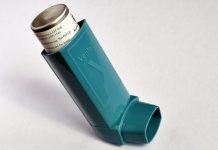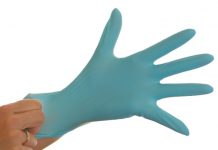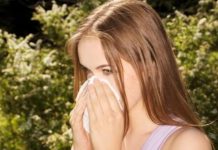The most common cause behind sneezing, congestion and runny nose is allergic rhinitis. It is not constrained to the cold season only and even then it is a kind of allergic rhinitis triggered by the low temperature which often results in dust and pollen accumulation.
We often resume to medicines as cure but it is interesting to note that this could be considerably prevented by avoiding the things that causes them in the first place. Here is a list of eight precautionary steps that may cause complete prevention or result in less severe and fewer symptoms:
 1. Identification
1. Identification
The most important and primary thing to do for preventing allergic rhinitis is to identify what you are allergic to. If you cannot do this by yourself, you can always consult a doctor who can give you helpful insights in such cases. Once you have identified the causes only then can you go ahead further deciding which preventive measures are plausible and which are not and how to circumnavigate the more difficult ones.
2. Removal
Once you have identified your causes you can try and remove, if possible, the items which helps allergen build ups, for example animals, carpets, rugs etc.
3. Regular Housekeeping
Maintain a proper and a regular housekeeping schedule to prevent the growth of allergens. Proper dusting and cleaning of the house and the household items help prevent such causes to a great extent.
4. Cleaning
Regular cleaning or periodic cleaning is a must if you wish to prevent allergens from affecting you. Besides regular dusting, you must also make sure to wash your linens and drapes in hot water periodically. Remember, dust and dust mites contain most of the allergen in your house. While superficial dusting can get rid of the dust hot water cleaning helps kill the germs and mites that further spread the allergens around.
5. Pet Restriction
If you have a pet and you are not completely sure whether or not it affects your health and triggers your allergen rhinitis then it is imperative that you control animal dander and other pet allergens by restricting them only to certain areas of your house.
6. Mold Control
Periodic cleaning should also include cleaning of taps and showers and bathtubs. Remember that just because it is always being used for cleaning and continuous running of water in and around them does not make them clean. After a certain period molds start appearing which can further trigger your allergen rhinitis. Cleaning them up with mold removers available in the market or even plain scrubbing them once a month is essential.
7. Bedroom Maintenance
Remember that bedroom is the most essential and should be the most guarded and well-kept and clean room of the entire house. We as adults spend one third of our time while children spend half their time inside the bedroom.
8. Keep Pollution Away
Air pollution might not be the cause of allergies but it does result in irritation of nose and lungs. Keep the air within the house pollution and pollen free. Keep your windows closed if necessary throughout the most part of the day if you live right next to a busy street. However, do not forget that proper ventilation and fresh air is also needed to prevent the growth of allergens within your house.
Keep your windows open in the early hours of the day or after late at night. This way the much needed circulation of fresh air will not be prevented. Avoid the practice of smoking tobacco within the house. If you use kerosene heaters or stoves make sure it is airtight and does not leak smoke. Try and use a dehumidifier every now and then to keep the walls and the air within the house fresh.
These above mentioned steps helps you reducing your chances of contact with indoor allergens and thus prevent you from the risk of developing a chronic allergic rhinitis. Try and manage your allergy symptoms without medicines as far as possible.













